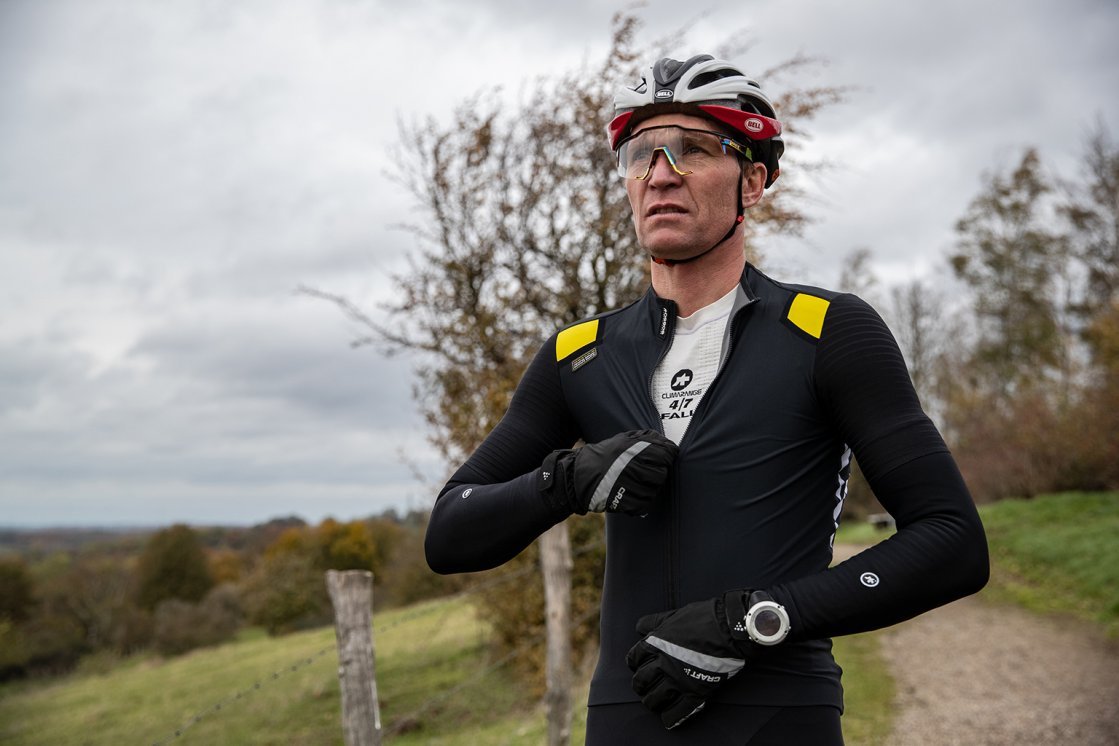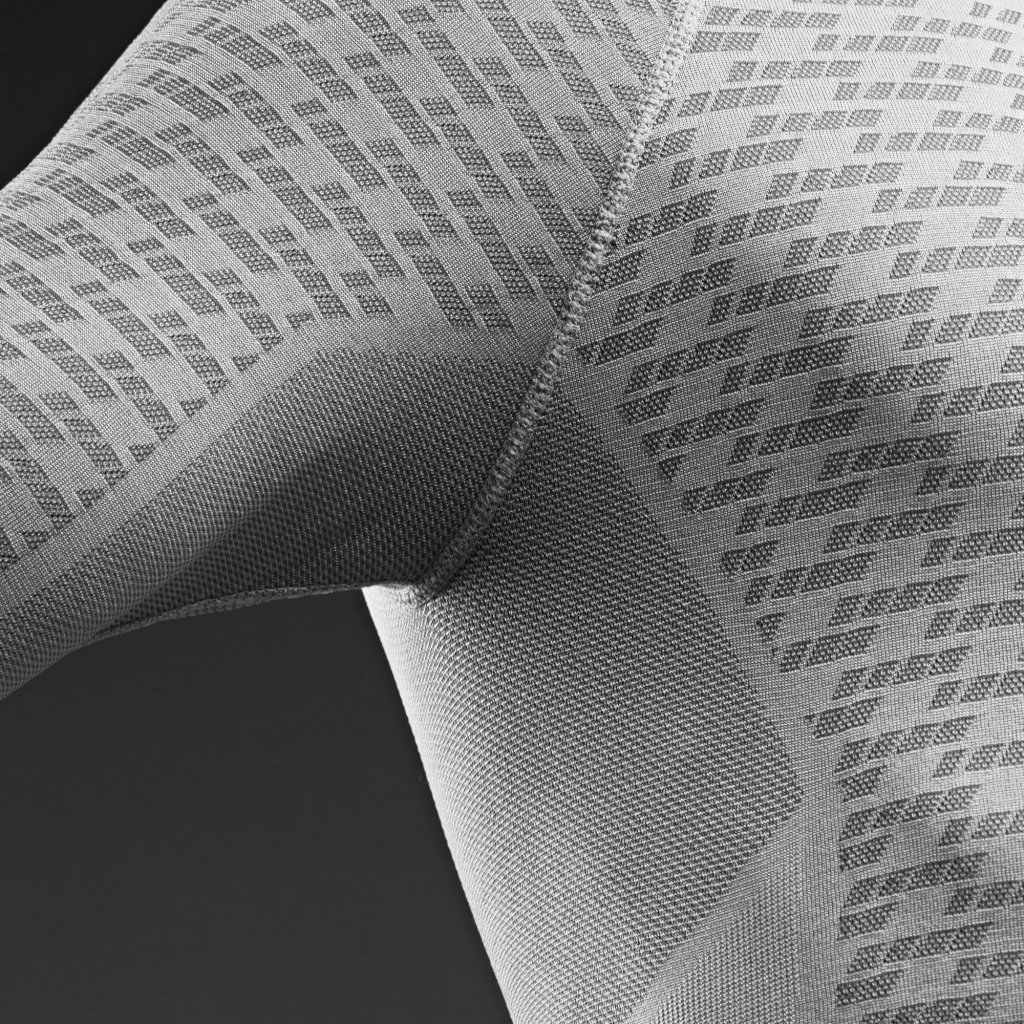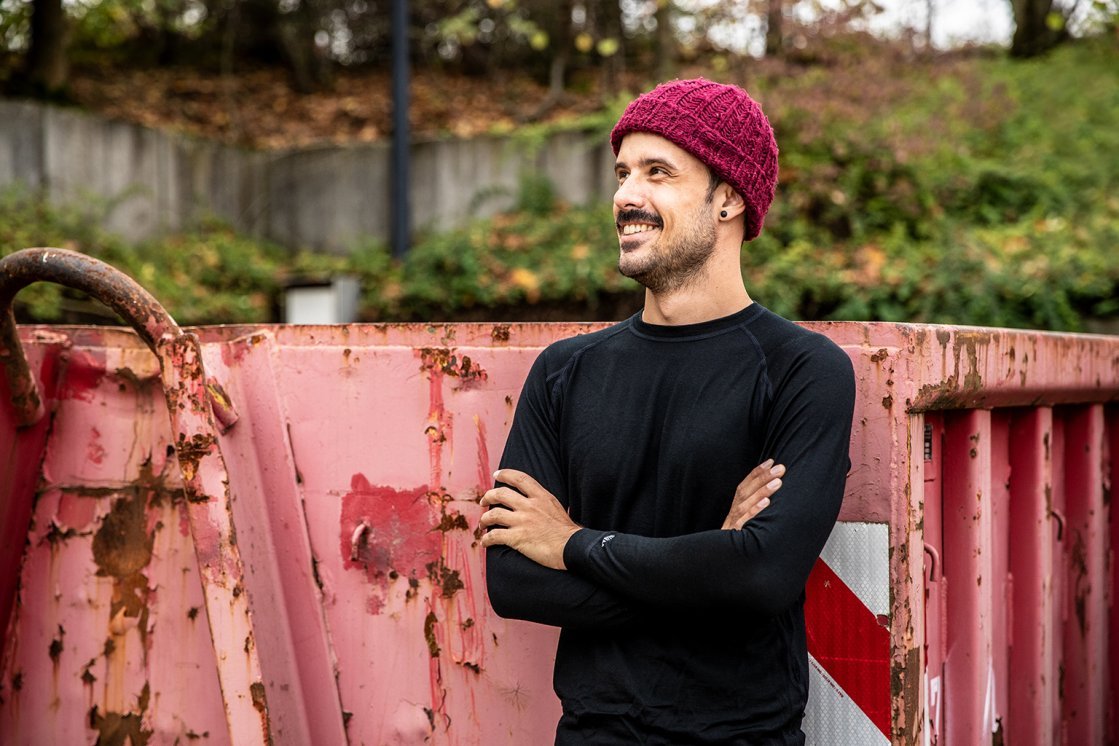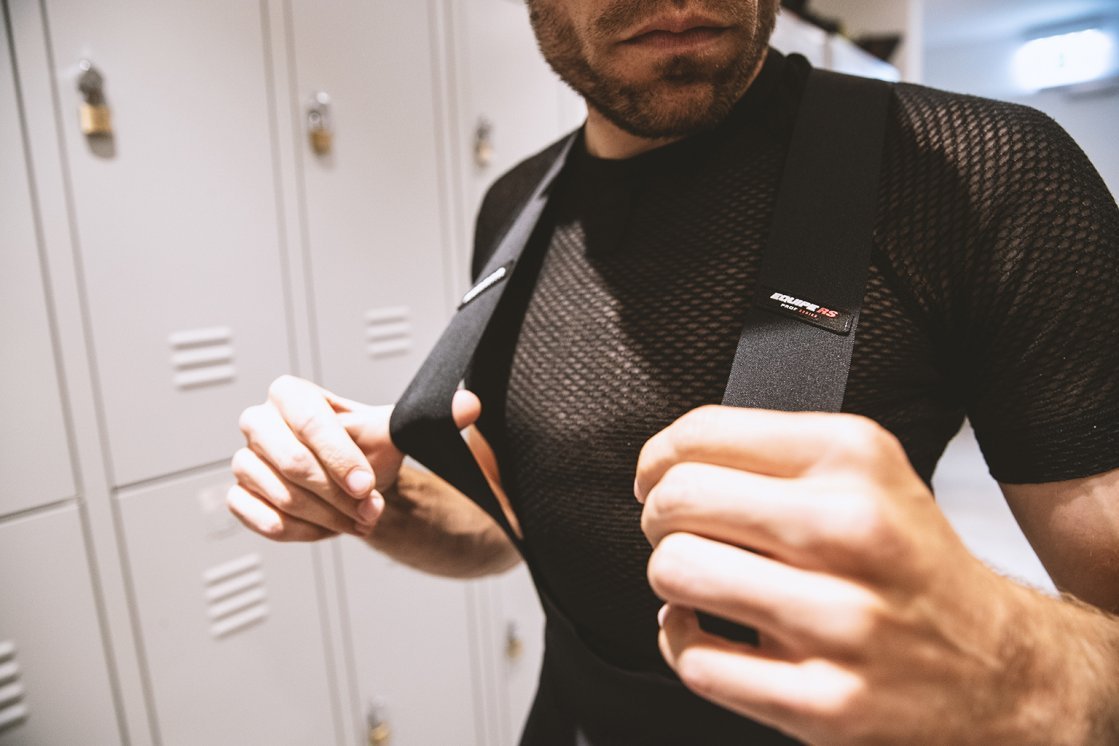
Chamois Cream for Cycling
No more sore spots after long bike rides! Chamois cream can provide relief. Here’s how to find the right one and use it well.
Never underestimate your undershirt! Because the right base layer makes your performance and your ride better. How? We'll explain it to you here...
Base layer, first layer, functional shirt, undershirt, underwear - call it what you want. But do it right! Because hardly any layer of clothing is underestimated as much as the first layer directly on the skin. It contributes significantly to your personal comfort and thus to your performance on the bike. Similar to the mid-layer, the base layer has to master a balancing act that no cotton shirt in the world can do. The simultaneous requirements:
Abase layer is required to spread sweat moisture that cannot be passed directly to the outside as fast as possible from the skin to the fabric. Why is that? This shortens the re-drying time and prevents a wet layer from cooling down quickly, especially in windy conditions. But there is - as always - not one do it all product, that is: the one base layer that fits perfectly for all bike activities. The choice of the right base depends on the adequate combination of fibre selection, shirt construction and personal body climate management.

Functional underwear supports the man-machine in terms of climate regulation.
Supporting the human machine
When we freeze or sweat a lot during sports, our performance capacity decreases. Our body has an optimal operating temperature of 37° C and tries to maintain it under all circumstances. The task of a base layer is to support it in this process. During normal activity, the human body runs at about 100 watts. The heat generated in this process is secreted in the form of gas via the sweat glands - we hardly feel a thing. During physical exertion, however, we produce up to 1,000 watts. Then the sweat glands work at full speed to cool down the body. Tight-fitting clothing that absorbs the watery secretion - known as sweat - and transports it away from the skin is the optimal solution - as long as it effectively releases the moisture to the outside. If this cannot happen due to lack of air permeability, so-called heat stress occurs. Anyone can understand this in quick form by holding their hand in a plastic bag for 30 seconds... However: Especially on the bike, the base layer must not be too "airy" due to the wind.
How well a base layer meets the requirements - retaining heat and removing moisture - depends on the material and the processing of the individual fibres. Merino wool fibres are thirsty: they can absorb between 20 and 35 percent of their own weight in moisture, synthetic fibres only about 5 to 15 percent. This is why functional shirts made of merino wool feel dry for a long time when sweating. Once the absorption capacity is reached, however, every shirt feels wet to the skin - regardless of the type of fabric. But that is exactly what is supposed to be prevented. Let us look at the strengths and weaknesses of the materials processed in base layers:
1. Synthetic materials: They are usually made of polyester or polyester-polyamide blends. Although synthetic fibres absorb less water than wool, they are specialised in wicking moisture away from the body as quickly as possible via their surface (wicking effect). Due to the fast distribution, more moisture can be released to the outside, as a result functional shirts made of synthetic materials dry faster. They are somewhat lighter, more robust and more complex to process - and the raw material is cheaper. Their disadvantage: there are bacteria that love on our sweat, or better said the body fats and salts in it. Unfortunately, they can settle down quite well in synthetic materials. Their excretions - one can already guess at the word - cause bad smells. Bad for team sports or the social (or just not) sitting together during a ride break...
2. Wool fibres: Merino wool is used exclusively for direct skin contact, as it is significantly softer and finer than normal new wool. For comparison: On average, new wool has a thickness of 30-50 microns (1 micron = 0.001 millimetres), merino wool between 15-24 microns, a human hair between 50-100 microns. As described above, wool can absorb up to a third of its own volume of moisture without feeling wet. However, if the tanks are full, it takes correspondingly longer for the base layer to dry again. In addition, wool fibres are not as robust and abrasion-resistant as their synthetic counterparts. However, more and more base layer manufacturers are working with hybrid fibres in which merino wool fibres are wound around a core of nylon or polyester. This combines the strengths of both and deals with their weaknesses quite well. An enormous advantage of merino fibres is their ability to prevent the typical sports smell of sweat. Where this ability comes from has not yet been fully clarified, but it is assumed that the bacteria simply cannot attach themselves as well to the surface of the wool fibres. The result can be seen or smelled in any case - well in this case not.
If a cyclist is having trouble choosing, they should first and foremost consider what purpose a shirt should serve. For a Road bike lap at high speeds, the tight-fitting synthetic shirt, perfectly adapted to transport sweat, is certainly the best choice. The same applies to Mountain biking. merino jerseys are suitable for Road and Mountain bikers, especially in the cold season, when the outside temperature already ensures that you sweat less, or the laps are shorter.
Bike packers and cyclists who are looking for minimum gear with maximum fun should generally concentrate on base layers made of merino wool. They can simply let them dry out after a long day of riding - and put them back on the next morning without offending the olfactory nerves of those around them.
Because although a large proportion of synthetic shirts are now equipped with odour-inhibiting features - such as nanosilver particles that kill bacteria - they can rarely keep up with the anti-smell function of merino wool.

GripGrab shows where body mapping makes sense: the heat zone under the arms is structured differently from the front of the torso, for example.
Smart and frequently used is so-called "body mapping". In doing so, base layers are constructed in such a way that different substances are used exactly where they can optimally support the athlete's body in its function. For example, by using different thicknesses on the torso and shoulders, different air permeability on the stomach and back or merino wool inserts on the neuralgic sweat zones. Base layer sections with Windstopper membranes are also included: Provided you avoid rain like the devil avoids holy water, they even make wind jackets or vests superfluous thanks to a windproof but water vapour permeable membrane that is close to the body. However, when it comes to Windstopper underwear, you have to be aware that their membrane always acts as a kind of brake on water vapour and sweat moisture does not pass through as well as through a knitted or woven item. Nevertheless: Those who prefer to do without a real jacket in cold, dry weather, but instead wear a warm jersey (plus mid-layer) and the wind protection for it directly on the skin, will probably be very happy with a Windstopper undershirt.

Stop with the baggy: with functional underwear, a close fit is essential.
Dear mountain bikers, you have to be strong at this point: there is no such thing as a casual base layer. Or in other words: Maybe it already exists, but it's no use. In order to perform the task of moisture removal, a base layer MUST fit tightly on the skin. (If you disagree, you should not be disappointed by the performance) Basically, this also answers the question whether underwear must have a cycling specific fit! The answer is yes and no. Because of course ski underwear or (long) running underwear also fits tightly to the body. The only question is: Does it still do so in the riding position on the bike? And are all parts of the body covered sufficiently and without disturbing - for example on the lower back and lower stomach? If so, then one can make an attempt. If not, please don't use it. Cooling down in the torso area at the front and rear for lack of proper clothing can have unpleasant consequences: Starting with a simple cold up to serious kidney problems.

Mesh underwear not only performs well in the cold season...
The topic of base layers is by no means limited to the cold season. Even in summer, base layers make perfect sense when choosing the right material and the right construction: the body surface, drastically increased by a mesh undershirt, accelerates the evaporation process and thus creates a supportive regulating factor in the temperature balance even at high temperatures. So when your mum used to say 'Put on an undershirt, it's cold', she was absolutely right. But only in part: she forgot about the summer.